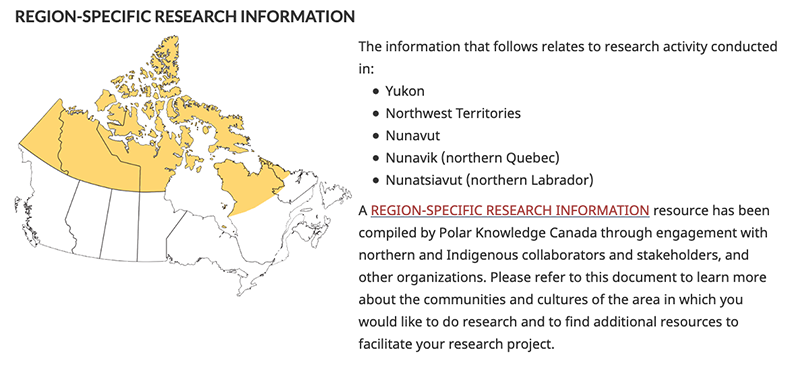Issue 14, Winter 2020
- POLAR at ArcticNet 2019 Annual Scientific Meeting
- POLAR’s Northern Science Award presented to Julie Cruikshank
- POLAR scientist publishes research on High Arctic plant communities and greenhouse gases in Arctic Science
- POLAR Speaker Series features BBC documentary producer, Canadian Museum of Nature scientist, and young Inuit film-makers
- Inuit Studies Conference in Montreal
- New on the POLAR Website: Resources for Researchers
POLAR UPdate, Winter 2020
POLAR at ArcticNet 2019 Annual Scientific Meeting
POLAR took an active part in the 2019 ArcticNet Annual Scientific Meeting, held in Halifax, Nova Scotia in early December. The meeting brought together over one thousand participants from across Canada and abroad, including researchers from a wide variety of disciplines, representatives from governments and northern Indigenous organizations, and students. POLAR staff presented their research on wildlife in a changing Arctic, on arctic plants and pollinators, and on permafrost thaw. In addition, POLAR co-chaired discussions on community-based monitoring and polar research cooperation between Canada and the UK.
POLAR staff were able to make many new connections and exchange knowledge with individuals working at the forefront of arctic research. POLAR introduced its programs and the Canadian High Arctic Research Station (CHARS) campus facilities to those unfamiliar with the organization, and updated research collaborators and others on its recent activities.
POLAR also joined the Canadian Museum of Nature to host “Tales from the Field”, an event featuring short, engaging presentations from four speakers: Inuit elder Simon Awa, who spoke about Inuit perspectives on sea ice, and scientists Dominique Fauteux, Emily Choy, and Paul Sokoloff, who each recounted memorable experiences from the field. The event culminated with the presentation of POLAR’s Northern Science Award.
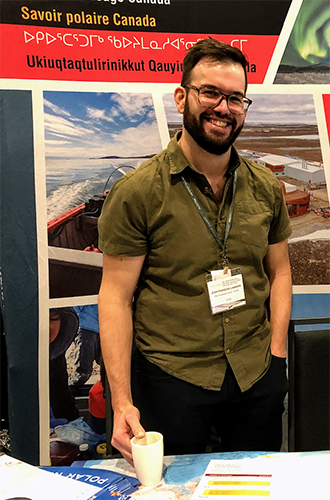
POLAR’s Northern Science Award presented to Julie Cruikshank
Dr. Julie Cruikshank received the 2019 Northern Science Award on December 5 at the ArcticNet Annual Scientific Meeting. Dr. Cruikshank, who is Professor Emerita in the Department of Anthropology at the University of British Columbia, has a long and distinguished record of documenting the oral histories and life stories of Athapaskan and Tlingit elders, and exploring Yukon First Nations’ systems of narrative and knowledge. Her work helps Yukon First Nations recognize and honour the strengths of their cultural traditions and achieve a full understanding of their identity and place in the world. Yukon Indigenous governments regularly draw on Dr. Cruikshank’s knowledge.
The award, which was created in 1984 and has been administered by POLAR since 2015, includes the Centenary Medal and a prize of $10,000. It recognizes a significant contribution to meritorious knowledge and understanding of the Canadian North and the transformation of knowledge into action.
Read Julie Cruikshank’s Northern Science Award citation here.
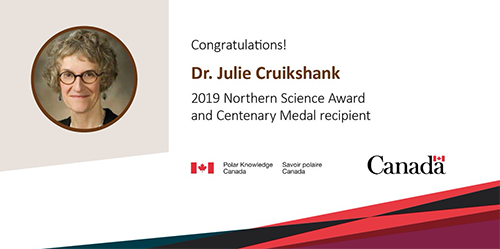
POLAR scientist publishes research on High Arctic plant communities and greenhouse gases in Arctic Science
POLAR botanist Johann Wagner is the principal author of a paper published recently in the scholarly journal Arctic Science. Entitled “Net greenhouse gas fluxes from three High Arctic plant communities along a moisture gradient”, the paper results from research conducted by Dr. Wagner and his colleagues in 2008-2009 on uninhabited Melville Island, on the relation between moisture, vegetation and greenhouse gases.
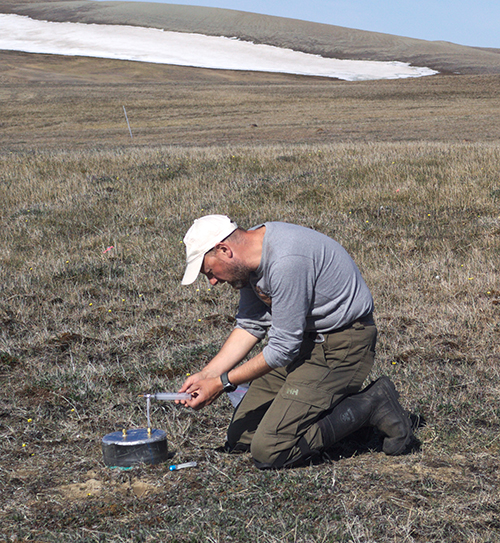
Photo: Johann Wagner
Their work demonstrated that researchers are probably underestimating the uptake of methane – a powerful greenhouse gas – by arctic soils. This is because most studies of this kind are done in wetlands, which emit methane; in some dryer areas, however, the soils absorb methane. The paper concludes that better understanding of the way different kinds of arctic ecosystems absorb or release greenhouse gases will improve our ability to predict environmental change as the climate warms and alters the distribution of ecosystems across the Arctic. Read the article here.

Photo: Johann Wagner
POLAR Speaker Series features BBC documentary producer, Canadian Museum of Nature scientist, and young Inuit film-makers
Jane Atkins, a producer with the acclaimed BBC documentary series “Frozen Planet”, and Canadian Museum of Nature scientist Dominique Fauteux both gave talks in November as part of POLAR’s public Speaker Series at the Canadian High Arctic Research Station (CHARS) campus. The series gives Cambridge Bay residents and visitors a chance to hear from and speak with researchers and other experts about their projects. Atkins was in Cambridge Bay to scope out Arctic research for the upcoming “Frozen Planet II” series, planned for release in 2021. She gave the audience a behind-the-scenes look at the aspirations and intent of the series, which aims to document wildlife, ecosystems and communities across the Arctic and Antarctic. Dr. Fauteux, who was in Cambridge Bay to study the winter ecology of lemmings, spoke about his research on the effects of climate change on small mammals.
The event concluded with a presentation from Inuit youth and elders working with the Reel Youth Film Program, a community development organization that uses film production to teach young people technical, leadership, and creative collaboration skills. To demonstrate the power of local storytelling, the young participants, all from Cambridge Bay, screened a film made by youth and elders in Kugluktuk, Nunavut about the effects of climate change on wildlife and communities. During their visit to the CHARS campus, the young filmmakers, who work with the Kitikmeot Heritage Society and whose project is supported by the Hamlet of Cambridge Bay, filmed conversations with elders about their life histories, their expertise and how they are adapting to climate change.
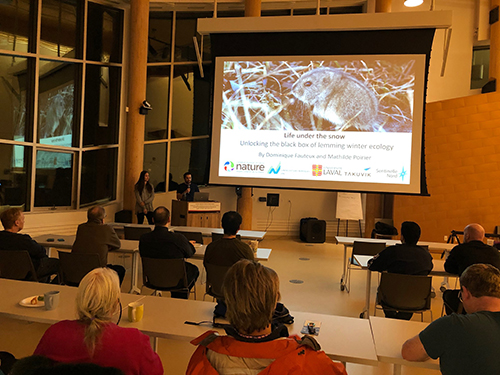
Inuit Studies Conference in Montreal
POLAR is committed to helping build a future where Northerners are involved in research at all levels. This means working now to inspire interest in science among young Northerners and showing them how to turn that interest into a rewarding career in research. At the most recent Inuit Studies Conference, held in October 2019 in Montreal, three Inuit POLAR staff members who work in science at the CHARS campus in Cambridge Bay, Nunavut shared their experiences and advice as members of a panel on Inuit in polar science. The panel, chaired by distinguished Inuit leader Mary Simon, generated lively discussion about how to encourage more Inuit to pursue a career in science and research. The biennial Inuit Studies Conference brings together university researchers and students, and professionals from Inuit organizations, institutions, and governments.
New on the POLAR Website: Resources for Researchers
In September, POLAR launched its “Resources for Researchers,” a new online feature to help researchers prepare for fieldwork in Canada’s North. Resources include a practical checklist, best practices and information relevant to research in Nunatsiavut (northern Labrador), Nunavik (northern Quebec), Nunavut, Northwest Territories and Yukon.
You’ll find POLAR’s Resources for Researchers here.
